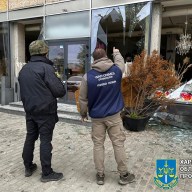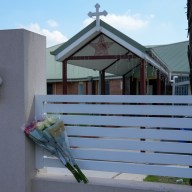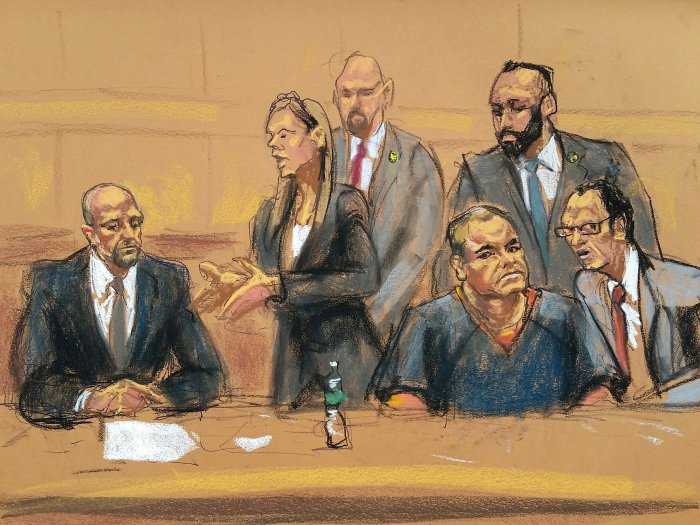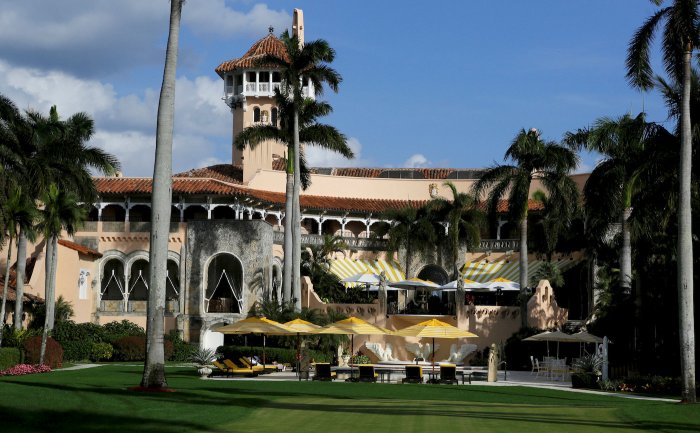By Scott Malone
BOSTON (Reuters) – The Boston Marathon bombing jury on Thursday viewed mockups of the twin pressure-cooker bombs that ripped through the crowd at the race’s finish line in 2013 and autopsy photos of one of the three people they killed. The jury viewed photos of Krystle Campbell, a 29-year-old restaurant manager who had come to the race with a friend. Campbell’s back was badly burned and her legs mangled and riddled with shrapnel by the April 15, 2013, blasts, said Dr. Jennifer Hammers, who was working at the Massachusetts medical examiner’s office at the time. “The reason that she passed away is because she lost a significant amount of blood in a short enough period of time that her body couldn’t make enough blood for her to survive,” Hammers said. The autopsy photos were shown just to jurors, causing some to wince and others to cover their mouths. Campbell likely died within a minute of the blasts, Hammers said.
Federal prosecutors contend that Dzhokhar Tsarnaev and his older brother planted the bombs, which also injured 264 people. Tsarnaev, 21, could be sentenced to death if he is convicted by the U.S. District Court jury in Boston. Tsarnaev is also charged with fatally shooting a police officer three days after the bombing as he and his older brother prepared to flee the city.
That shooting marked the start of 24 chaotic hours that saw Dzhokhar and Tamerlan Tsarnaev, 26, hurl pipe bombs and a smaller, simpler, pressure-cooker bomb at police in the Boston suburb of Watertown. The gunfight ended when Dzhokhar sped off in a hijacked SUV, running over his brother. Tamerlan later died of his injuries. Dzhokhar briefly escaped, prompting a day-long lockdown of most of the greater Boston area while police conducted a massive manhunt. He was found hiding in a boat parked in a backyard late on April 19, 2013. Hammers was the 89th witness to testify in a trial that concluded its 14th day of testimony on Thursday. Prosecutors are believed to be nearing the end of their case against Tsarnaev.
After they wrap up, defense lawyers will have an opportunity to call witnesses of their own, which could include Tsarnaev.
MOCK BOMBS
Earlier on Thursday, jurors viewed the six-quart (5.7-liter) mock bombs, lined with metal BB pellets and featuring a jerry-rigged remote detonator built of model car parts and a Christmas light. They passed them from hand to hand after an FBI special agent read out the instructions in al Qaeda’s “Inspire” magazine that prosecutors contend Tsarnaev and his older brother used to make their bombs. “It’s pretty heavy,” Federal Bureau of Investigation supervisory special agent Edward Knapp said as he hoisted one of the mock bombs into a black backpack of the type that the Tsarnaev brothers are accused of having used to carry their bombs through the crowds of spectators. Each silvery bomb was marked with a black cross of tape over its lid, through which a fuse was threaded. The fuse was intended as a backup way of setting off the bomb if the electronic system failed, said Knapp, who demonstrated how the remote control worked. In addition to Campbell, the blasts killed graduate student Lingzi Lu, 23, and 8-year-old Martin Richard. Massachusetts Institute of Technology police officer Sean Collier was shot dead by one of the Tsarnaevs, though prosecutors say they do not know which brother pulled the trigger. The bombs were stuffed with explosives taken from fireworks, FBI chemistry specialist David McCollam testified.
The jury saw a photo of an intact “Big Snow” firework found in Dzhokhar Tsarnaev’s dorm room at the University of Massachusetts at Dartmouth and another, with the powder removed, found in a backpack taken from the room by a friend of Tsarnaev. Tsarnaev’s lawyers opened the trial with the blunt admission that their client committed all the crimes of which he is accused. Rather than trying to prove his innocence, they are trying to avert a death sentence by convincing the jury that Tamerlan was the driving force behind the attacks. The same jury that determines whether Tsarnaev is guilty will decide whether he is sentenced to life in prison without the possibility of parole, or death.
(Editing by Jonathan Oatis, James Dalgleish and Grant McCool)


















